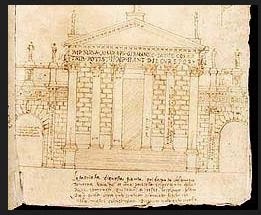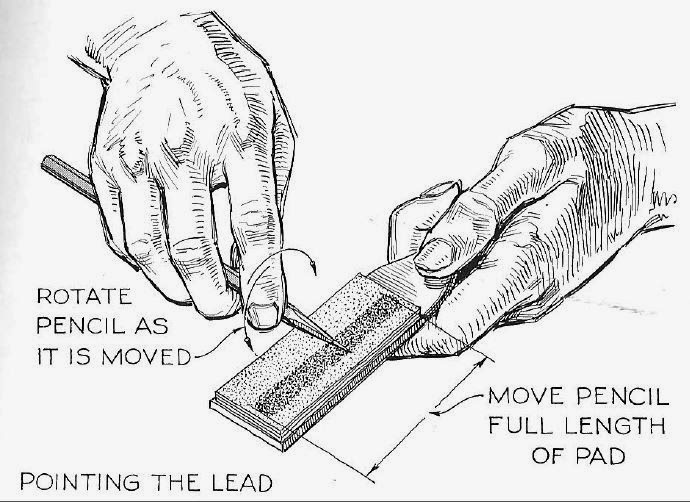Welcome to ENGR1304!

Look at the Fish!
It's more than just drawing, it's visualization.
"A pencil is a great eye".
The importance of Spacial Visualization Skills:
From a recent study: "Spacial skills of incoming ENGR students were assessed using the PSVT:R, Lappan, MCT test.
Students scoring below 60% encouraged to take a spacial visualization course covering:
Students who took spatial visualization course had:
Spacial skills reported to be a better predictor of overall performance than math grades" - (2014 FYEE conference).
Example Spacial Visualization test:
http://www.psychometric-success.com/faq/faq-spatial-aptitude-test.htm
Example test:
http://www.aptitude-test.com/spatial-visualization1.html
Example rotation test
(tip - click on images to enlarge them):
http://www.quiz.biz/quizz-250841.html
Wolfram spatial visualization demonstrations:
http://demonstrations.wolfram.com/TestYourSpatialVisualizationAbilities/
http://www.psychometric-success.com/aptitude-tests/spatial-ability-tests-cubes.htm
Take one of the above tests - how did you do?
~~~~~~~~~~~~~~~~~~~~~~~~~~~~~~~
Introduction - pg 10
Graphical communication has been used for hundreds of years...
Prehistoric drawings...

Look at the Fish!
Louis
Agassiz (1807-1873) was a famous Harvard University Professor and founder of
the Harvard Museum of Comparative Zoology. Agassiz was well known for his insistence on
close, first-hand observation. One of
Agassiz’s students, Samuel H. Scudder, was assigned to “look at the fish”. 1:40 →
https://www.youtube.com/watch?v=5QG44HhJlP8#t=343It's more than just drawing, it's visualization.
"A pencil is a great eye".
The importance of Spacial Visualization Skills:
From a recent study: "Spacial skills of incoming ENGR students were assessed using the PSVT:R, Lappan, MCT test.
Students scoring below 60% encouraged to take a spacial visualization course covering:
- Isomeric sketching
- orthographic projection
- Flat patterns
- Rotation of objects
- Object reflections and symmetry
- Cutting planes and cross sections
- Surfaces and solids of revolution
- Combining solids
Students who took spatial visualization course had:
- higher retention rates
- higher GPA's
- increased ability and confidence in learning
Spacial skills reported to be a better predictor of overall performance than math grades" - (2014 FYEE conference).
Example Spacial Visualization test:
http://www.psychometric-success.com/faq/faq-spatial-aptitude-test.htm
Example test:
http://www.aptitude-test.com/spatial-visualization1.html
Example rotation test
(tip - click on images to enlarge them):
http://www.quiz.biz/quizz-250841.html
Wolfram spatial visualization demonstrations:
http://demonstrations.wolfram.com/TestYourSpatialVisualizationAbilities/
http://www.psychometric-success.com/aptitude-tests/spatial-ability-tests-cubes.htm
Take one of the above tests - how did you do?
~~~~~~~~~~~~~~~~~~~~~~~~~~~~~~~
Introduction - pg 10
Graphical communication has been used for hundreds of years...
Prehistoric drawings...

architectural drawings in ancient Greece and Rome...
Leonardo di ser Piero da Vinci;
April 15, 1452 – May 2, 1519, - an Italian Renaissance polymath revered for his technological ingenuity. He conceptualised flying machines, a tank, concentrated solar power, an adding machine, and the double hull, also outlining a rudimentary theory of plate tectonics. Relatively few of his designs were constructed or were even feasible during his lifetime, but some of his smaller inventions, such as an automated bobbin winder and a machine for testing the tensile strength of wire, entered the world of manufacturing . He made important discoveries in anatomy, civil engineering, optics, and hydrodynamics.
April 15, 1452 – May 2, 1519, - an Italian Renaissance polymath revered for his technological ingenuity. He conceptualised flying machines, a tank, concentrated solar power, an adding machine, and the double hull, also outlining a rudimentary theory of plate tectonics. Relatively few of his designs were constructed or were even feasible during his lifetime, but some of his smaller inventions, such as an automated bobbin winder and a machine for testing the tensile strength of wire, entered the world of manufacturing . He made important discoveries in anatomy, civil engineering, optics, and hydrodynamics.
Old School Drafting Instruments:
Supplies needed for class:
3 ring binder with dividers.
Pencil & eraser:
- - .5 mm, or H / 2H lead
- - If you bring in a wooden pencil, also bring a pencil sharpener.
- - eraser: you will need more than what is on the end of your pencil.
Ruler, compass, protractor.
- We won't be spending too much time on manual drafting, so don't spend a bunch of $ getting anything fancy - the dollar store is fine, but do get some basic tools!

Paper:
- Notebook paper (for taking notes with)
- Printer paper (or E- paper) for sketches.
3 hole punch
Engineering paper:
If you can't find any E-paper, that is ok, just so you know what it is - graph paper engineers commonly use because it makes sketching easier.
(Draw on the blank side of E paper, not on the grid side)

Technical communication in the Information Age:
Verbal Communication:
Meetings, presentations, conferences, discussions, conversations, etc.Written Communication:
Proposals, Reports, Memos, Notes, Emails, Lab Books, etc.
What is the difference between technical and liberal arts communication styles?
What roles do engineering drawings play in the communication process?

What is the difference between a technical drawing, and traditional art?
Precise communication distinguishes technical drawing from visual arts.
- Artistic drawings are subjectively interpreted; their meanings are multiply determined.
- Technical drawings have one intended meaning.
Example diagrams:
Mechanical Engineering:


Civil & Structural Engineering:


Offshore Rig (Chem and petroleum Engineering)

Rules of the game:
To make the drawings easier to understand, people use familiar:
- symbols
- perspectives (partial views, half views)
- units of measurement (imperial, metric)
- notation systems
- visual styles
- page layouts
- lettering
- lines
- Surfaces
- Materials
Together, such conventions constitute a visual language, and help to ensure that the drawing is unambiguous and relatively easy to understand.
Standards, or conventions, or industry standard - a set of technical definitions and guidelines that function as instructions for designers, manufacturers, operators, or users of equipment. These are commonly used approaches without any formal documentation behind it.
Code - A standard becomes a Code when it has been adopted by one or more governmental bodies and is enforceable by law, or when it has been incorporated into a business contract.
List of technical standard organizations:
link
Drawing Standards - link
Various disciplines; electrical, electronic, pneumatic, hydraulic, etc., have industry recognized symbols to represent common components.
Example Line Types:
Mechanical Engineering Symbols:
http://jobspapa.com/mechanical-engineering-symbols.html
Hatching for different materials:

Engineering drawing abbreviations and symbols - link
~~~~~~~~~~~~~~~~~~~~~~~~~~~~~~~~~~~~~~Chapter 1 Sketching and Lettering
Despite the computer graphics tools available today, the ability to sketch ideas quickly on paper is often a fast practical way to evaluate them and see which ones are worth exploring further.
Freehand sketching is used in the early stages of the design process.

Sketch: rough graphic representation of an idea or concept.
They are
- quick
- black and white
- few details
- created without rulers or other drawing instruments
- clear
- concise
- dark enough to be scanned and copied
- typically 2D format & views.

Sketches are used:
- to help think or visualize an idea
- during brainstorming sessions
- to record information in the field
- as a starting point
.
"I'm not an artist" ??
Sketching is a technical skill, acquired and learned through practice.
Use:
- basic shapes
- arrows
- stick figures
- doodles

Lines:
Sketches are made up of lines.
- don't watch the ball, don't watch the pencil
- watch where you want to go.

It's ok to have bumpy freehand lines


Shapes:
Draw a Circle:
Curves: connect the dots!

Isometric Sketching:
Estimating Dimensions:
Views:
Worksheets:

Carpooling? Where does everyone live, exchange info with people who live near you in case your car breaks down etc.
.
.

.




*******************************************
Lettering
Sketches include textual information such as dimensions, assembly instructions, and manufacturing details.
Different lettering styles:
Single Stroke Gothic
Hand position
Lettering Worksheets:


Sign and date your sketches just like a lab book!
Just for fun, video for the weekend:
http://www.dimensions-math.org/Dim_regarder_E.htm
http://www.youtube.com/embed/6cpTEPT5i0A?list=PL3C690048E1531DC7
http://www.youtube.com/watch?v=6cpTEPT5i0A&list=PL3C690048E1531DC7
Dimensions
above and beyond xyzt ie x(left right) y(side to side) z (up down)
t(time)? String
theory, M-theory, brane’s, all the TOE’s (Theory of everything’s) rely on
multidimensional euclidean spaces - AKA 4D +, tesseract
kinds of stuff etc. etc.
In order to see in 4D… well… have you ever read
Flatland? To understand going from 3D to
4D, first visualize what it means to go from 1D to 2D, from 2D to 3D, then use
the same info to go 3D to 4D. Flatland
is about life in 2D. In the book you are
not above the 2D plane looking down (that requires 3D), you are inside the 2D plane
itself – take a piece of paper, draw a 2D circle on it, then pick the paper up
and look at it from the edge. From
inside the paper the circle looks like a line.
All shapes look like lines/points if you are a 2D being in a 2D
world. In the book triangles have to
vibrate to warn those who approach of it’s points (they can’t see the point,
they can only see a line) etc. etc. The
2D beings cautiously feel their ways around the “lines” to feel the curve of a
circle, and corners of squares/octagons etc. etc. Trapped inside the 2D plane, unable to see
the shape from the top, you begin to understand the difficulties associated
with communicating information of higher dimensional worlds to lower
dimensioned ones. As a 3D being, we can
easily see/understand 2D and 1D… seeing up into 4D takes a little doing though.
Flatland:
Flatland:
http://www.youtube.com/watch?v=UnURElCzGc0
The first hour of the dimensions movie concentrates on
projecting 3D objects onto 2D surfaces (which is what we are doing in CAD). Globe
to a wall map – how the continents on the flat map are distorted when you try
and flatten a 3D object into 2D. It moves a little slow, but remember, the
point is to train your eyes to recognize the object casting the shadow if all
you can see is the distorted shadow on the flat ground. Once you train your eyes to turn 2D distorted
shadows into 3D objects in your mind, you are one step away from turning 3D
shadows into possible 4D objects. (4D objects
don’t cast 2D shadows, their shadows are three-dimensional.) Just as a 2D square is a slice of a 3D
cube. A 3D cube is a slice of a 4D
tesseract. Just as the 2D creature in
flatland could bump into a line, feel it’s curvature, then walk around it to
discover a shape – and this shape was only a slice of the 3D world…. We 3D
creatures can bump into a 3D shape, walk around it, and start to imagine a slice of
the 4D world. A world that might actually exist, only we can only see it’s cross section because we are
trapped in 3D.


























































No comments:
Post a Comment